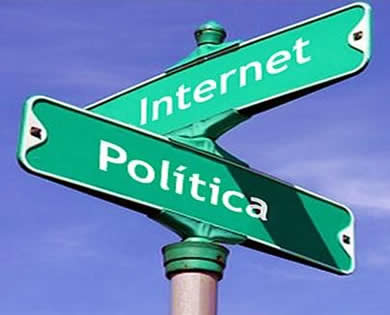Citizen Journalism
The previously mentioned “macaca” episode has historic import above and beyond the already noteworthy role it played in George Allen’s defeat. The simple act of videotaping a candidate in a public setting would henceforth be fair game for a new era of citizen journalists. Until the middle of last decade, our established or mainstream media (MSM) was the official and sanctioned arbiter of how news got reported and defined. There was an undeniable elitism inherent in the old model, as a handful of powerful institutions not only could determine what constituted “news”, but (perhaps more importantly) what did not.
The proliferation of smartphones and all manner of digital cameras signifies that anyone is now capable of recording and “reporting” daily events. Platforms like YouTube and Facebook, as well as websites and blogs, have made it feasible for any single recording to reach a massive audience. Blogs have even evolved the concept of what we can (or should) call reporters: today anyone with a camera or a smartphone and any kind of Internet presence can theoretically become an instantaneous part of the political dialogue. Anyone with some degree of technical prowess is capable of becoming a media expert: clips from debates and speeches can be juxtaposed with previous statements and in a so-called amateur’s hands, a compelling political commentary is crafted.
Naturally campaign operatives are all too happy to have savvy and highly motivated partisans helping create talking points, content and the ever-important energy or “buzz” that any successful staff requires. In 2004 and even 2008 this was still widely regarded as a young person’s game. No longer: with Facebook and YouTube more user-friendly and customizable than ever, it is possible that previously untapped demographic groups will become active in this process. Today, everyone with a smartphone has a high quality video camera in their front pocket, meaning potential news stories really can be broken 24/7. The traditional gatekeeping mechanisms are being steadily democratized—a trend that shows no sign of slackening.
Or consider how the politicians are using this technology to their advantage. In some regards, it remains inconceivable that Sarah Palin was (and still is) able to shun the MSM. She has thus far avoided having a single formal press conference, once the minimum requirement to be taken seriously on the national stage. Of course the fact that political candidates can conceivably circumvent these increasingly “old-fashioned” formalities is at once a revealing commentary on our new paradigm as well as a distressing harbinger of the ways style over substance—always an issue in politics—may gain easier traction going forward.
For anyone who would (still) dismiss Palin, think about how much of a factor the “death panels” meme became during the health care debates. This quote started as a Facebook post and quickly went viral; as we know it wound up being one of the buzz-words (and talking points) for the Republicans. Or consider the ways the script has been flipped in terms of legitimizing social media from the inside: now we will often see the news ticker at the bottom of the screen actually a series of Twitter feeds. More, both candidates and news organizations can (and do) plant seeds via tweets to see what kind of reaction follows: sometimes the angle of a breaking story can be crafted well in advance, thanks in large part to social media.
Going Mobile
Every election since 2000 has had insiders suggesting this is the year of mobile. To the extent that the use and functionality of mobile devices has increased each cycle, the predictions have not been incorrect. But we are, arguably, only now seeing the ubiquity of ownership rates coupled with the augmented capabilities of these products. For the first time, we are seeing mobile communication utilized as a first, not a second or third option.
To recap: going back to 2000 mobile was a legitimate platform, but the PC experience was many degrees better. By 2004 we saw the employment of text messaging (which initially gained widespread acceptance on a grander scale in Europe and Asia), although this was—and to an extent, remains—a generational phenomenon. By 2008 we had the game-changing release of the iPhone, but with clunky web browsing and without an Apps store (or an Android alternative) we still did not possess anything close to an optimal confluence of platform and performance. Looking toward 2012 the form factor and functionality issues have largely been eliminated, and we now commonly see people using their phones for purposes other than making calls. Visualize the lines at a grocery store these days: the first thing you notice are people pulling out their phones, even for a few seconds, to send a text or check email or visit a website.
Finally, the explosion of apps has bridged the generational gap: cultural acceptance coupled with individual habit has made the smartphone, at least some of the time, an entertainment device first and a phone second. Naturally this renders everyday activities part of the mobile experience. In a single decade we’ve watched computing go from desktop PCs in a home office move to other rooms via notebooks; now tablets and smartphones have made practically every activity possible in any location.

